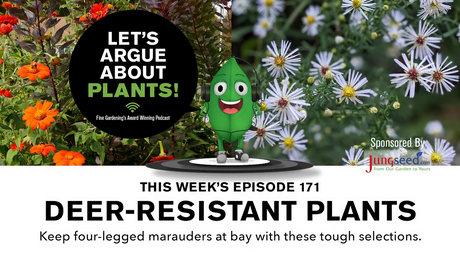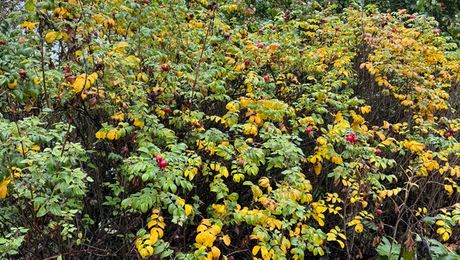

Chapter 13: Least-Toxic Lawn Pest Management
Lawn Insects
Bohart, R.M. 1940. Studies on the biology and control of sod webworms in California. Journal of Economic Entomology 33:886-890. The classic study of webworms.
Gordon, F.C., and D.A. Potter. 1985. Efficiency of Japanese beetle (Coleoptera: Scarabaeidae) traps in reducing defoliation of plants in the urban landscape and their effect on larval density in turf. Journal of Economic Entomology 78:774-778. This study indicates that if only a few traps are used, they may attract more adult beetles to the garden than are caught in the traps, actually increasing the problem.
Kennedy, K.M. 1981. Sod Webworm: Biology and Control. East Lansing: Michigan State University Cooperative Extension Service (Extension Bulletin E-1480, File 27.36). 4 pp. This pamphlet contains excellent color photos of the caterpillar and adult stages of sod webworm and the damage webworms cause.
Ladd, T.L., Jr., J.D. Warthen, Jr., and M.G. Klein. 1984. Japanese beetle (Coleoptera: Scarabaeidae): the effects of azadirachtin on the growth and development of immature forms. Journal of Economic Entomology 77: 903-905. This study shows that leaves of plants sprayed with neem are protected from feeding by adult beetles.
Madison, J.H. 1971. Practical Turfgrass Management. Boston: PWS Publishers. 466 pp. This is the best lawn management text yet written.
Niemczyk, H.D. 1981. Destructive Turf Insects. Wooster, Ohio: HDC Book Sales. 48 pp. (Available from: HDC, 2935 Smithville-Western Rd., Wooster, Ohio 44691.) An invaluable tool for diagnosing pest problems on lawns. Includes a discussion of monitoring methods and excellent color photographs of turfgrass insect pests and typical damage symptoms.
Noble, W.B. 1932. Sod Webworms and Their Control in Lawns and Golf Greens. Washington, D.C.: USDA (Circular No. 248). 4 pp. A wonderful pamphlet with lots of fascinating details on sod webworm behavior.
Tashiro, H. 1987. Turfgrass Insects of the United States and Canada. Ithaca, N.Y.: Cornell University Press. 391 pp. An invaluable guide to the biology and behavior of turfgrass insect pests. This excellent volume includes information on cultural and biological controls, monitoring data, and other elements of an integrated pest management approach. Many color photos aid in identification.
Lawn Diseases
Bruneau, A.H., J.E. Watkins, and R.C. Shearman. 1985. Turfgrass Disease and Damage Prevention and Control: A Common-Sense Approach. Lincoln: University of Nebraska Cooperative Extension Service Publications (Publication EC81-1235). 28 pp.Good color photos of lawn disease symptoms make this a handy tool for diagnosing lawn problems.
Chet, I., and Y. Henis. 1985. Trichoderma as a biocontrol agent against soil-borne root pathogens in Ecology and Management of Soil-Borne Pathogens, Proceedings of Section 5 of the Fourth International Congress of Plant Pathology, American Phyto-pathological Society, St. Paul, Minnesota, eds. C.A. Parker et al. 358 pp. This study describes the suppression of common soil pathogens by Trichoderma fungi.
Couch, H.B., 1973. Diseases of Turfgrass. Huntington, N.Y.: Krieger Publications. 348 pp. This is the most scholarly and comprehensive collection of information on turf diseases currently in print. There is a strong emphasis on understanding and changing horticultural management practices that stimulate turf diseases. Unfortunately, the book is somewhat dated and lacks the latest information on potential biological controls and newer, less-toxic fungicides.
Couch, H.B., 2000. The Turfgrass Disease Handbook. Malabar, Florida: Krieger Publishing Co. 209 pp.
Dernoeden. P.H. 1989. “Symptomatology and Management of Common Turfgrass Diseases in Transition Zone and Northern Regions” in Integrated Pest Management for Turfgrass and Ornamentals, eds. A.R. Leslie and R.L. Metcalf, pp. 273-289. Washington, D.C.: U.S. EPA. (Available from: GSCAA, 1617 St. Andrews Ave., Lawrence, KS 66046.) A useful review of cultural practices that prevent or cure common lawn diseases.
Gear, Alan, ed. 1986. Trichoderma Newsletter. (Available from: Henry Doubleday Research Association, Ryton-on-Dusmore, Coventry, CV8 3LG, England.) This beautifully produced publication provides up-to-date information on the rapid developments in research on and use of Trichoderma as a biological control agent for many horticultural and agricultural disease organisms.
Gibeault, V.A., R. Autio, S. Spaulding, and V.B. Younger. 1980. Mixing turfgrasses controls Fusarium blight. California Agriculture 34(10):11-12. An excellent study demonstrating the effectiveness of planting a mix of grass varieties to increase disease protection.
Hoitink, H.A.J., and T.C. Fahey. 1986. Basis for the control of soil-borne plant pathogens with composts. Annual Review of Phytopathology 24:93-114. This is a source of information on beneficial fungi in compost.
Katan, J. 1981. Solar heating (solarization) of soils for control of soil-borne pests. Annual Review of Phytopathology 19:211-236. An important study documenting enhanced plant growth and suppression of disease in solarized soils.
Ohr, H.D. 1978. Management practices to minimize disease problems. California Turfgrass Culture 28(1):1-4. A good review of cultural practices on lawns that help prevent disease.
Scott, O.M., and Sons. 1987. Scott’s Guide to the Identification of Turfgrass Diseases and Insects. Marysville, Ohio: O.M. Scott and Sons, Co. 105 pp. Excellent color photos and line drawings make this pocket-sized paperback a handy identification tool.
Shurtleff, M.C. Jr., 1955. Control of Turf Brown Patch. Providence: University of Rhode Island Agricultural Experiment Station (Bulletin 862). 25 pp. A report on cultural practices that reduce brown patch.
Singh, H.B., and U.P. Singh. 1980. Inhibition of growth and sclerotium formation in Rhizoctonia solani by garlic oil. Mycologia 72:1022-1025. One of the few scientific investigations of garlic oil as a fungicide.
Singh, U.P., H.B. Singh, and R.B. Singh. 1980. The fungicidal effect of neem (Azadirachta indica) extracts on some soil-borne pathogens of gram (Cicer arietinum). Mycologia 72:1077-1093. A discussion of the fungicidal properties of neem.
Smiley. R.W., ed. 1983. Compendium of Turfgrass Diseases. St. Paul, Minn.: American Phytopathological Society. 103 pp. A scholarly overview of the biology and ecology of most common lawn diseases. The information helps you design cultural practices to prevent or stop the progress of lawn diseases.
Turgeon, A.J., R.P. Freeborg, and W.N. Bruce. 1975. Thatch development and other effects of preemergence herbicides in Kentucky bluegrass turf. Agronomy Journal 67: 563-565. This study documents ways in which repeated use of herbicides on lawns causes long-term turf damage.
Vargas, J.M., Jr., D. Roberts, T.K. Dannenberger, M. Otto, and R. Detweiler. 1989. “Biological Management of Turfgrass Pests and the Use of Prediction Models for More Accurate Pesticide Applications” in Integrated Pest Management for Turfgrasses and Ornamentals, eds. A.R. Leslie and R.L. Metcalf, pp. 121-126. Washington, D.C.: U.S. EPA. This paper documents the effectiveness of the microbe-enriched organic fertilizers in fighting necrotic ring spot on Kentucky bluegrass.
Lawn Weeds
Bowen, W.R. 1980. Turfgrass Pests. Oakland: University of California Cooperative Extension Service (Publication 4053). 53 pp. (Available from: ANR Publications, 6701 San Pablo Ave., Oakland, CA 94608.) A good source for identifying lawn insects, weeds, and diseases; includes excellent color photographs.
DiTomaso, J.M. and E.A. Healy. 2007. Weeds of California and Other Western States: Volumes 1 and 2. Oakland, California: University of California Agriculture and Natural Resources. Volume 1: 834 pp. and Volume 2: 974 pp. This two-volume set is available through UC-ANR. Visit their catalog website for these and other publications (anrcatalog.ucdavis.edu). While these excellent volumes are aimed primarily at the Western States, there are many weeds listed that are present elsewhere in the U.S. and Canada. Excellent photographs and text.
McCarty, L.B., J.W. Everest, D.W. Hall, T.R. Murphy, and F. Yelverton. 2001. Color Atlas of Turfgrass Weeds. Ann Arbor, Michigan: Sleeping Bear Press. 269 pp.
Mansfield, R. 1977. Weed Control in North American Ornamental and Sports Turf: An Integrated Approach. Burnaby, B.C.: Simon Fraser University (Pest Management Paper No. 12). 98 pp. (Available from: SFU, Burnaby, B.C., Canada V5A 1S6). This master’s thesis contains a good discussion of primarily cultural approaches to weed management in turf. The bibliography is exhaustive for the period up to 1977.
Shearman, R.C., D.M. Bishop, A.H. Bruneau, and J.D. Farrer. 1983. Turfgrass Weed Identification and Control: A Common Sense Approach. Lincoln: University of Nebraska Cooperative Extension Publications (Publication EC83-2241). 42 pp. Color photographs and brief descriptions of symptoms make this a handy tool for identifying lawn insects, weeds, and diseases.
Moles
Henderson, F.R. 1983. “Moles” in Prevention and Control of Wildlife Damage, ed. R. Trimm. Lincoln: University of Nebraska Cooperative Extension Service. 9 pp. This publication contains the most comprehensive discussion of mole trapping techniques we have seen to date.
Search Terms
Pathogens and Pests
- Anthracnose: Colletotrichum graminicola
- Dollar spot: Moellerodiscus spp., Lanzia spp. (aka: Sclerotinia homoeocarpa)
- Fusarium blight or Summer patch: Fusarium culmorum, F. tricinctum, & Magnaporthe poae
- Fusarium patch or Pink snow mold: Microdochium nivale (aka– Fusarium nivale)
- Grey snow mold: Typhula spp.
- Leaf blotch: Helminthosporium cynodontis
- Loose smut: Ustilago cynodontis
- Melting out: Drechslera sativus (aka: Helminthosporium sativum)
- Powdery mildew: Erysiphe graminis
- Pythium blight (grease spot): Pythium ahpanidermatum
- Red thread: Laetisaria fuciformis
- Rhizoctonia blight (brown patch): Rhizoctonia solani & other Rhizoctonia spp.
- Rust: Puccinia striiformis, P. graminis, & P. coronata
- Southern blight: Sclerotium rolfsii
- Necrotic ring spot or Spring dead spot: Leptosphaeria korrae
- Stripe smut: Ustilago striiformis
- Take-all patch: Gaeumannomyces graminis
Fine Gardening Recommended Products

A.M. Leonard Deluxe Soil Knife & Leather Sheath Combo
Fine Gardening receives a commission for items purchased through links on this site, including Amazon Associates and other affiliate advertising programs.


















Comments
Log in or create an account to post a comment.
Sign up Log in